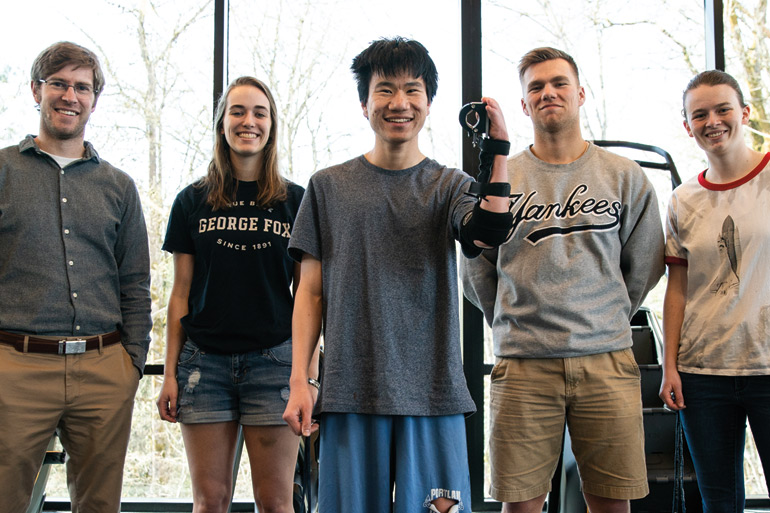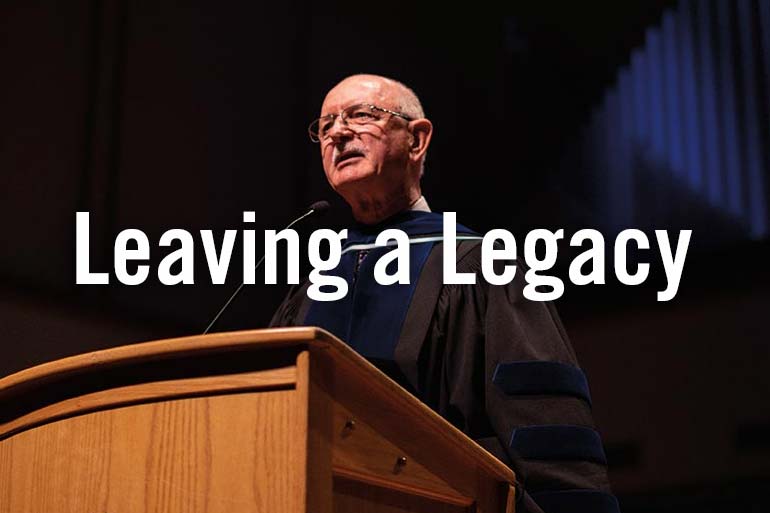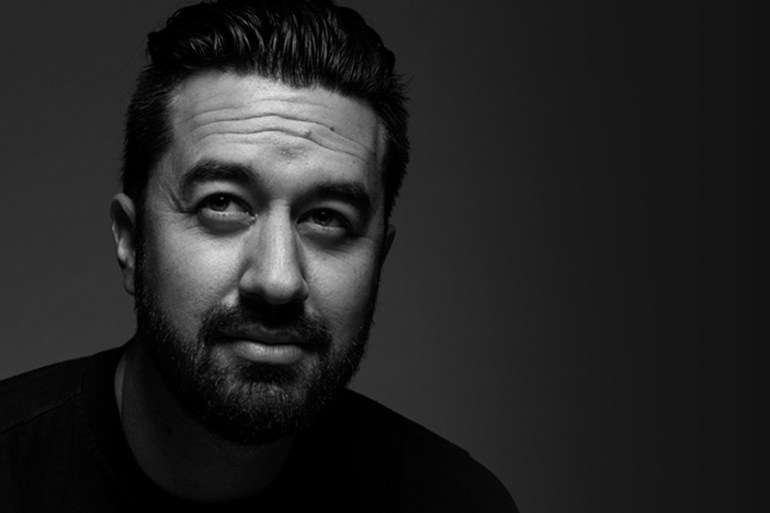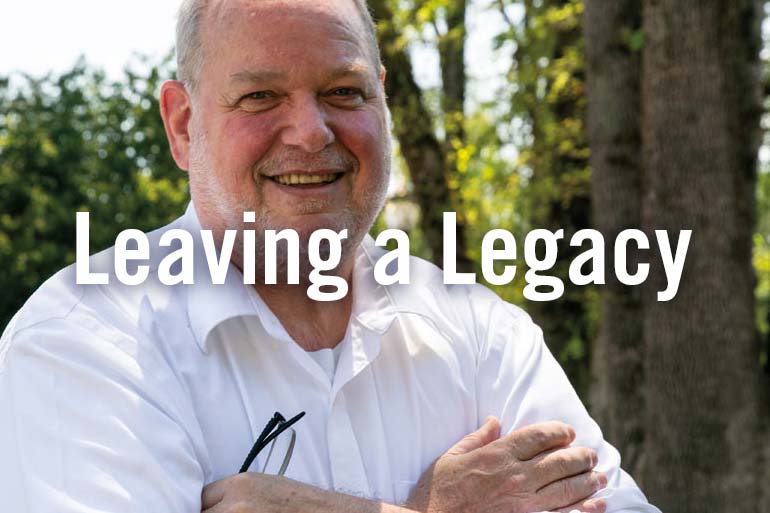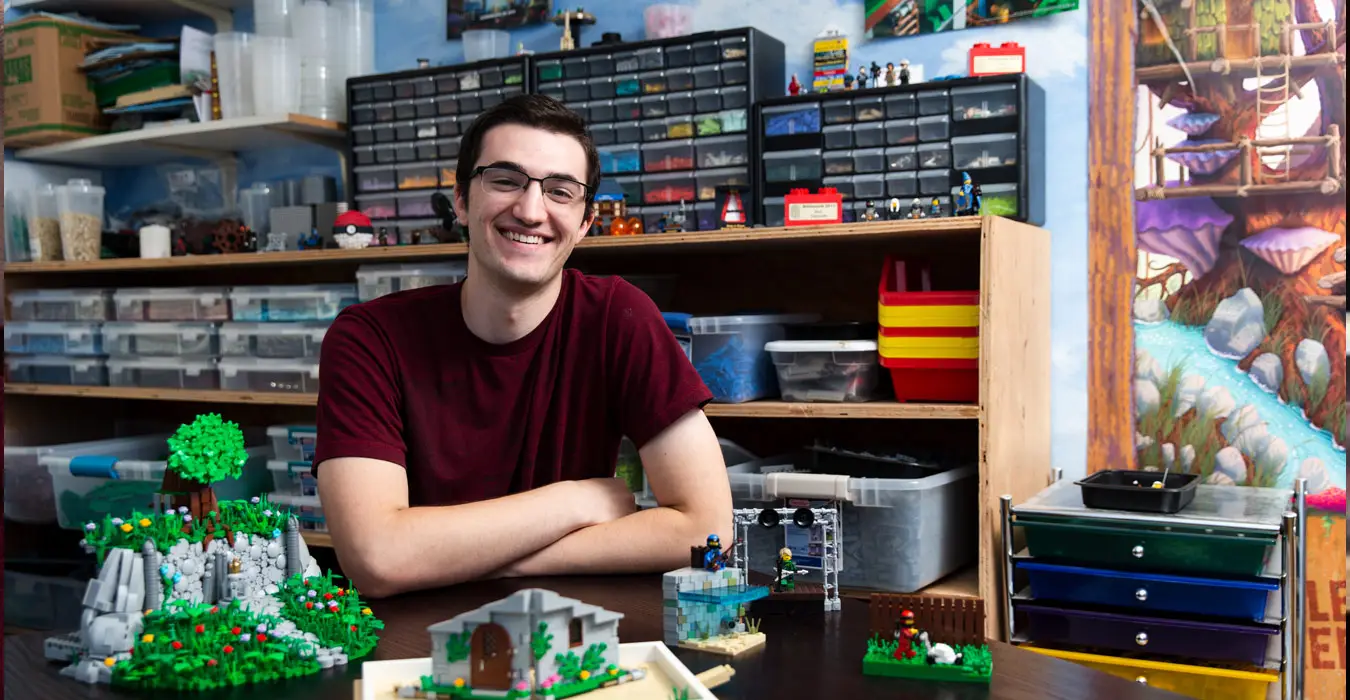
Building Blocks to the Future
Engineering major Grant Davis parlays his love of LEGO bricks into a design for production – and possibly a career
By Sean Patterson
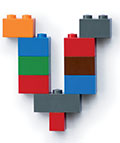 Visit a toy store anywhere around the globe, and there’s a chance you may come across Grant Davis’ latest creation.
Visit a toy store anywhere around the globe, and there’s a chance you may come across Grant Davis’ latest creation.
Davis, a sophomore engineering major from Beavercreek, Oregon, teamed with a fellow LEGO lover in Canada to create the company’s first-ever pop-up book. The kit – featuring two walls hinged at the base that open to reveal a LEGO scene – hit the market last fall, making Davis the first person in Oregon to have a design accepted and produced by the company.
The design is the brainchild of Davis, a lifelong builder who, like many children, was fascinated with the many ways the bricks could be configured to create vehicles, towns, ships and landscapes. Rather than be content with prefabricated kits, however, Davis opted to take his hobby a step further – design his own scenes, inspired by his imagination and the desire to create.
Like a painter uses canvas, Davis uses LEGO bricks as his artistic outlet. He particularly enjoys building castles and pirate scenes, and his work has been displayed in museums and recognized with best-of-show designations at some of the world’s largest LEGO conventions. But he’s not content to simply build for the fun of it.
“I like trying to come up with new things that nobody has thought of before, with the same pieces that everybody else in the world has,” he says. “That’s the fun challenge of it. And it’s what led me to try my hand at entering a LEGO design contest.”
Equipped with his pop-up book idea, Davis befriended a fellow builder online, Jason Allemann in Canada, and together they developed a prototype they submitted as part of LEGO’s ongoing design contest, via the company’s LEGO Ideas website. Getting the attention of company executives is simple: Drum up enough fan support for your design, and it will be considered for production.
Specifically, Davis and Allemann needed 10,000 fan votes for their product to be eligible for development. The duo submitted their idea in early 2017 and saw instant interest – about 5,000 votes in the first couple months – before watching it gradually gain momentum and hit the 10,000 mark in early 2018. With that, a master builder at LEGO headquarters in Denmark reviewed the design and approved it for production.
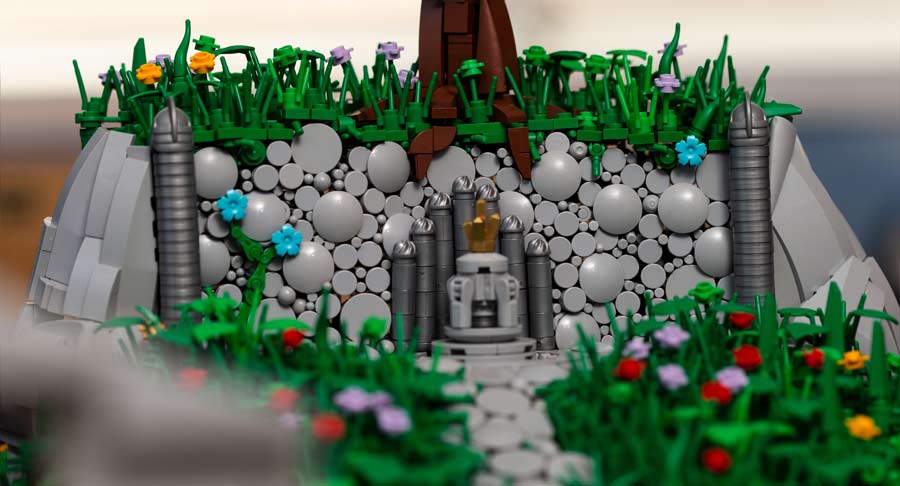
“A painter’s limitation is 2D, and they use paints,” Davis says. “I use 3D, and my limitation is whatever pieces LEGO happens to make. Being creative with limitations is where really fun things happen. So, if I have 30 of these pieces sitting in my house and I see somebody online come up with some amazing way to use them, I’m like, ‘Oh my gosh, now I can do that, too.’ It’s really fun to try to innovate like that.”
Davis and Allemann’s kit comes packaged with two scenes and allows users to create their own pop-up scenarios. “That was one of the key features we emphasized in our pitch – that it’s not just this one scene you can build. It’s a book with an infinite number of stories in it. We want people to make their own inserts, their own stories.”
Davis isn’t privy to how many kits have been produced – the company is guarded with that information – but he and Allemann do receive 1 percent of profit royalties, which they split. “That doesn’t sound like a lot, but if they sell 100,000 kits, that adds up pretty quickly,” Davis says. “So, I’m hoping to pay some of my college expenses with it.”
Ultimately, he hopes to pursue a career with the company he first fell in love with as a child. “Ideally, I’ll just move to Denmark and become a master builder with LEGO,” he says. “And if that doesn’t work out, I’ll always have my electrical engineering degree to fall back on, which isn’t too bad of a fallback plan.”
Featured Stories
Bruin Notes
- University Explores Healthcare Partnership in Southern Oregon
- Alumni Plaza Celebrates Legacy of Bruins Past and Present
- The Class of 2019 moves on to new careers and grad school
- Faculty Members Honored as Top Teachers, Researchers for 2018-19
- New Facility Focus: Hadlock Student Center
- Community Mourns Loss of Longtime Supporter Ken Austin
- In Print
- Recent Recognition
- New Residence Hall on Track for Fall 2019 Completion
- Sports Spotlight
- Teaching Theology in the Age of Netflix
- University Recognized for Value, Innovation in Latest U.S. News Rankings
Alumni Connections
- Tolon Pursues Her Passion for Law
- Life Events
- George Fox Grads Find Community and a Mission Through Socially Conscious Fashion
- News, by Graduating Year
- Rodriguez Recognized as 2018 Oregon Elementary School Principal of the Year
- René Makes Big Impact as a Big Brother
- Minthorne Leaves Legacy of Leadership, Generosity
- Send Us Your News




